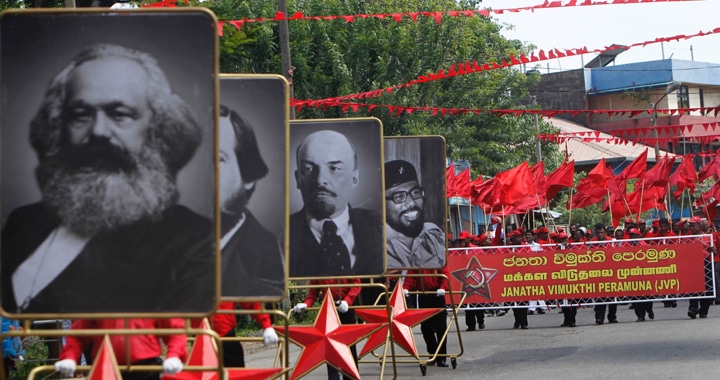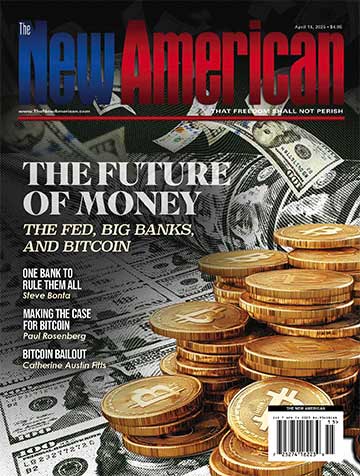
Another massive terrorist atrocity, and another massive intelligence failure? Why so many troubling, unanswered questions? Why were warnings ignored? Who allowed it to happen? Who are the terrorist bombers: Islamists, communists, socialists, foreign intel operatives, all of the above? Is there a larger agenda beneath the surface? Is the rushed narrative of “Islamist extremists” a little too convenient?
Almost immediately following the deadly terrorist bombings of Christian churches and tourist hotels on April 21, Easter Sunday, Sri Lankan officials named members of a little-known radical Islamist organization as the perpetrators. The rapid fingering of National Thowheed Jamath as the group responsible seems to be remarkably too convenient and leaves unanswered a host of troubling questions that we should not allow to be dismissed.
According to government spokesmen and various early news reports, Sri Lankan intelligence officials had detailed information — including the names of individual terrorists — about multiple pending terrorist attacks on Easter against Catholic churches and other targets more than two weeks prior to the actual attacks. Why was no action taken? Did the intelligence chief withhold the information from the president and prime minister? Did the president and/or prime minister ignore the warnings?
There is now a blame game going on among all of these parties as to who is responsible for this failure. Part of the reason for this is that Sri Lanka has a divided national government, with President Maithripala Sirisena and Prime Minister Ranil Wickremesinghe being completely at odds with one another, and each being beholden to competing parties and constituencies.
“A major and extraordinary failure of intelligence appears to have preceded the murderous terrorist suicide bombings claiming at least 290 lives in Sri Lanka, with the country’s government announcing an investigation amid recriminations between ministers and security officials about an apparent failure to act on vital information,” the British newspaper The Independent reported on Monday, April 22.
The death toll, which by April 24 had climbed to 359, was centered among Sri Lankan Catholics, who were the primary targets of the attacks. On the same day, credit for the attack was claimed by the Islamic State (IS), but this could be merely an opportunistic claim to enhance the IS profile, and has not been independently confirmed.
Especially troubling are the reports of forewarning that were not acted on. “Warnings of impending multiple attacks, stating that a number of churches as well as the Indian High Commission in Colombo would be targeted, were said to have been received by Sri Lankan officials from a foreign intelligence service,” The Independent reported. It noted further that authorities in the capital of Colombo “have not named the foreign source, but two security officials claim that at least some of the information had come from the Indian foreign intelligence service RAW (Research and Analysis Wing of the Cabinet Secretariat) through agents infiltrated into Islamist groups.”
Who Knew, and Why Was Nothing Done?
Cabinet spokesman and health minister Rajitha Senaratne said seven suicide bombers who struck on Easter Sunday were Sri Lankan citizens linked to National Thowheed Jama’ath. However, he also said they were connected to foreign elements tied to “an international network.”
According to Senaratne, warnings about the attacks came as early as April 4 but they were not passed on to the Prime Minister Wickremesinghe. “On 9 April, the chief of national intelligence wrote a letter and in this letter many of the names of the members of the terrorist organisation were written down,” Senaratne stated. “The prime minister was not informed by these letters and revelations.”
“We are not trying to evade responsibility but these are the facts,” Senaratne added. “We were surprised to see these reports. We do not believe these attacks were carried out by a group of people who were confined to this country. There was an international network without which these attacks could not have succeeded.”
Telecommunications minister Harin Fernando posted images of the intelligence chief’s letter, entitled “information on an alleged plan attack” on Twitter. He demanded “serious action” to investigate why the atrocities were not prevented. In addition, the terrorist threat was the subject of a memorandum on April 11 sent by Priyalal Dissanayake, the deputy inspector general of police. His document was addressed to: director, ministerial security division; director, judicial security division; director, retired presidents security division; acting director, diplomatic security division; and acting director, retired presidents security division.
The police document states:
We would like to draw your special attention to the page no 2 to 4 of the statement of the State Intelligence Service stating that information has been received regarding an alleged plan of suicidal attack by the leader of ‘Nations Thawahid Jaman’ Mohomod Saharan.
According to information of that statement would like you to give special attention and inform your staff to provide special security measures to the areas covered by your division.
In addition to these recent warnings, Hilmy Ahamed, vice president of the Muslim Council of Sri Lanka, said he warned government, military, and intelligence officials about the group and its leaders as far back as three years ago. “I personally have gone and handed over all the documents three years ago, giving names and details of all these people. They have sat on it. That’s the tragedy,” Ahamed said.
Backdrop: Identity Politics and Sri Lanka’s Communist-Socialist Context
Sri Lanka (formerly known as Ceylon) is an island nation off the southern tip of India that has been afflicted with socialist economics, communist revolutions, ethnic conflicts, and terrorist wars ever since gaining its independence from Great Britain in 1948. Its population of 21.6 million is divided ethnically among Sinhalese (75 percent), Tamils (11 percent), and Moors (Arabs, 9 percent), as well as Malays, Chinese, Veddas, and Africans. It is also divided along religious lines among Buddhists (70 percent), Hindus (12.6 percent), Muslims (10 percent), and Christians (7.5 percent). More important, however, than these multicultural differences are the Marxist-Leninists in Sri Lanka’s various communist and socialist parties who have exploited these divisions for decades to keep the island in turmoil, often at the behest of Soviet Russia, Communist China, socialist India, and socialist/Islamist Pakistan.
The pro-Soviet Communist Party of Sri Lanka, CPSR (formerly the Communist Party of Ceylon), is a member party of the current ruling coalition, the United People’s Freedom Alliance (UPFA) chaired by Sri Lanka’s President Sirisena. The Ceylon Communist Party (CCPM), which is Maoist, split off from the Communist Party of Ceylon in 1964 to form a hardline adherence to Mao Zedong’s China. The Lanka Sama Samaja Party is a militant Trotskyist communist party that has joined ruling coalitions.
Then there is the Janatha Vimukthi Peramuna, JVP (People’s Liberation Front), which is an openly declared Marxist-Leninist communist party that carried out two terrorist wars against the central government in the 1970s and 1980s, before adopting a “revolutionary parliamentarianism” strategy and joining the political process, as prescribed by communist strategist Jan Kozak. As an official political party, the JVP, along with its allies in the media and academia, can now provide “pressure from above” while the terrorist cadres continue “pressure from below.”
Rohana Wijiweera, who founded the JVP and led it in both of its armed revolts, was trained at the Soviet Union’s Patrice Lumumba University (now renamed Peoples’ Friendship University of Russia), as were thousands of other revolutionaries and terrorists from the 1960s through the 1980s. Wijiweera, who was killed in 1989, is still revered by leftists in Sri Lanka and around the globe, where his Che Guevara-like bearded image is regularly seen on posters in demonstrations, prominently displayed alongside portraits of Karl Marx, Friedrich Engels, and Vladimir Lenin. (The photo below, from a May Day march in 2012 in Colombo, shows portraits of all four, with Wijiweera’s portrait being the fourth from the front; photo credit: AP Images.)

Besides the communist influence provided by the CPSR Stalinists, the CCPM Maoists, the LSSP Trotskyists, and the JVP terrorists, many of the other 50-plus parties that appear on the surface to be more moderate in comparison to these four are actually also tilted in the far-left direction. The Sri Lanka Freedom Party, for example, one of the country’s two largest parties, is frequently described as “democratic socialist” and “Sinhalese nationalist,” but those euphemisms are woefully inadequate. It was founded in 1951 by S.W.R.D. Bandaranaike, a Marxist, who was elected prime minister in 1956 by allying with the LSSP Trotskyists and the CPSR Stalinists.
Bandaranaike immediately began instituting socialist policies and established relations with the Soviet Union and the People’s Republic of China. Following his assassination in 1959, his widow, Sirimavo Bandaranaike, became the leading “progressive” force in Sri Lankan politics, serving three terms as prime minister: 1960-1965, 1970-1977, and 1994-2000.
Mrs. Bandaranaike expanded her husband’s socialist program at home and his radical foreign agenda, causing disaster for the nation’s economy and placing Sri Lanka firmly in the fold of the worldwide communist revolution. She became a leader of the misnamed Non-Aligned Movement (NAM) and Non-Aligned Nations, which were, in reality, aligned with the Soviet Union, China, Cuba, Vietnam, Yugoslavia, and other communist nations. Sri Lanka remains a member of the pro-socialist, pro-communist NAM. She welcomed mass-murderer Mao Zedong’s sidekick, Premier Zou Enlai, to Colombo, established relations with communist East Germany, stiff-armed the United States, and supported communist dictator Ho Chi Minh in the Vietnam War.
As prime minister, S.W.R.D. Bandaranaike pushed forward and implemented the Sinhala Only Act, which, according to critics, such as Professor Rohan Gunaratna, a Sri Lankan journalist/academic, started the ongoing cycle of ethnic and religious violence. The law replaced English with Sinhalese as the official language, thus crippling the educational system, which had no replacement texts and materials in Sinhalese, and alienating the Tamil and Hindu populations.
“Sri Lanka went wrong mainly because of our short-sighted politicians, who played in politics for their political and personal reasons. They brought the Sinhala Only Act which was absolutely unnecessary when all ethnic groups in Sri Lanka were living peacefully,” Prof. Gunaratna said, in an interview with the DailyFT. “By introducing the Sinhala Only Act we got nothing. It has destroyed the security and the stability of our country and we suffered in a 30-year war.”
Bandaranaike’s Sinhala Only policies, which were continued by his widow, contributed substantially to the Tamil unrest, which was exploited by the Liberation Tigers of Tamil Eelam (LTTE, better known as the Tamil Tigers), the terrorist organization that carried out a 26-year war of “national liberation” against the central government and pioneered the use of suicide bombers, as well as other terrorist practices.
Russia, India, China, and Pakistan — and their intelligence services — exploited these ethnic-religious-linguistic conflicts, weaponizing them as “identity politics,” a communist practice that is becoming all too familiar in our own country.
In a follow-up report we will provide more details on the concrete moves by these powers over the past several decades to plant not only their agents, but also the divisive identity politics viruses, in Sri Lankan society.
Photo of St. Sebastian’s Church in Sri Lanka, Easter Sunday, April 21, 2019: AP Images
Related articles:
Sri Lanka Bombings: Violence Against Christians Under-reported
Demise of Sri Lanka’s Tamil Tigers May Be Near
Socialist Strategy Against America: Pressure From Above and Below
Chechen Terrorism: Made in Moscow




